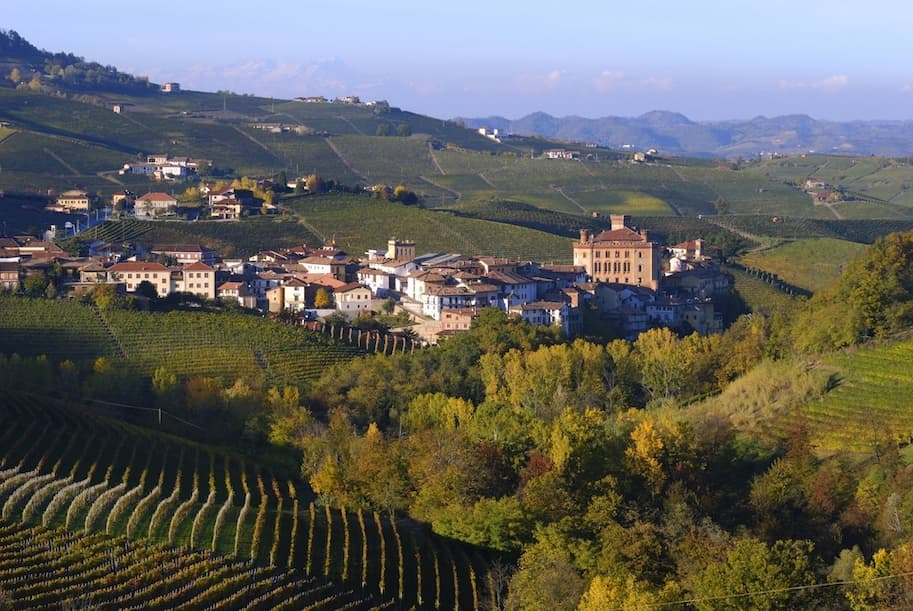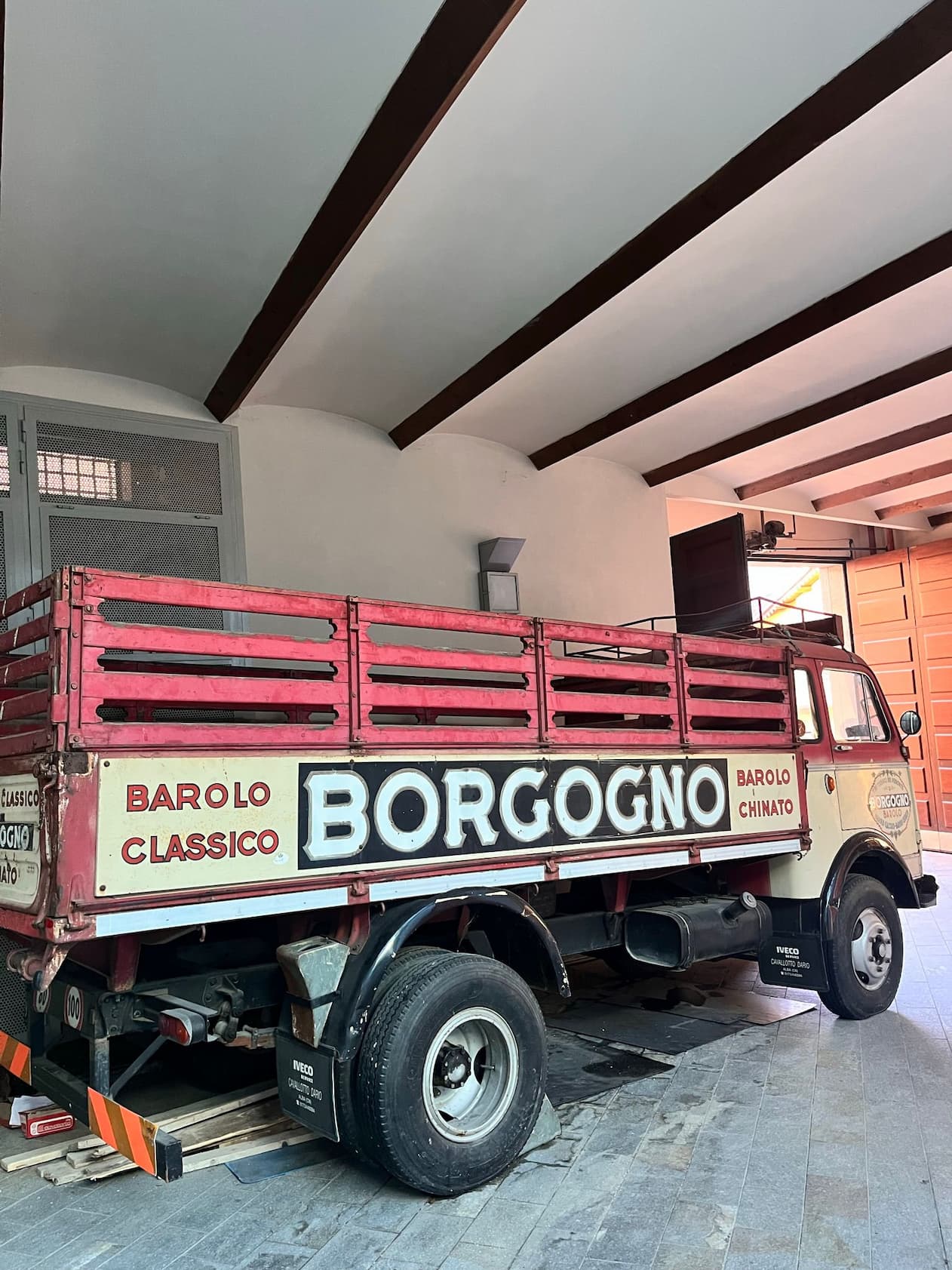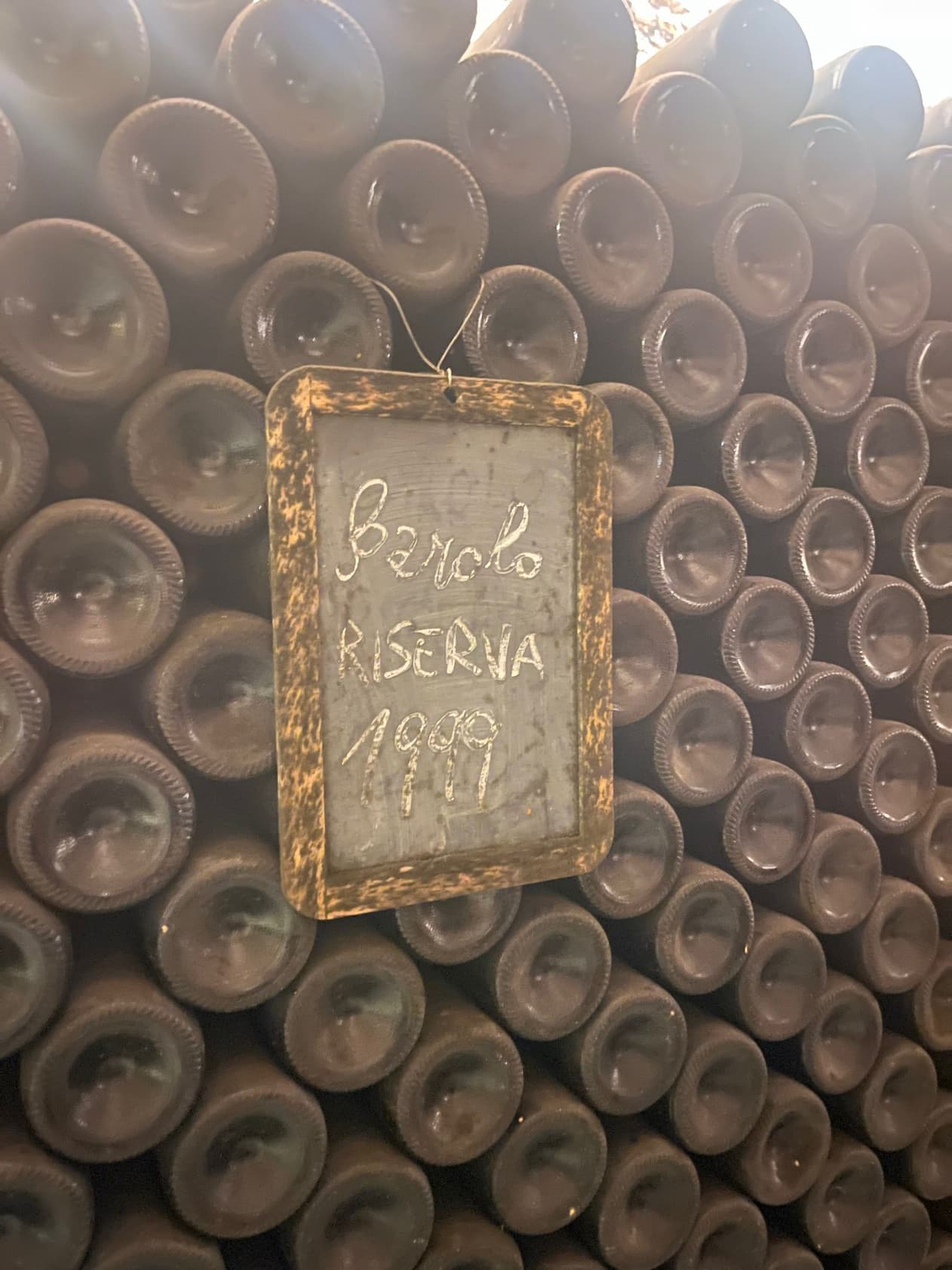Join us this Saturday for a captivating tasting of Borgogno—classic wines from Piedmont, made with tradition, care, and a whole lot of character.
Saturday 24th May
2.00pm-5.00pm
Open on the day:
2.00pm-5.00pm
Open on the day:
'23 Borgogno Barbera d'Alba $62.00
'21 Borgogno Dolcetto d'Alba $68.00
'22 Borgogno Langhe Freisa $68.00
'22 Borgogno Langhe Nebbiolo $80.00
'22 Borgogno "No Name" Langhe Nebbiolo $98.00
'21 Borgogno Dolcetto d'Alba $68.00
'22 Borgogno Langhe Freisa $68.00
'22 Borgogno Langhe Nebbiolo $80.00
'22 Borgogno "No Name" Langhe Nebbiolo $98.00
'20 Borgogno Barolo $152.00
Enjoy 10% discount when you purchase any three bottles on the day.
Hosted by Luca Collia from Borgogno, and free of charge.

Piedmont: A Historic Wine Region at the Foot of the Mountains
Piedmont, meaning “foot of the mountain” in Italian, is located in northwestern Italy and is surrounded by the Alps and Apennines. Its varied landscape of mountains, hills, and river valleys makes it ideal for growing grapes. The region has a continental climate, with fog and rain caused by the meeting of warm and humid air. The hills are especially well-suited to grape growing, thanks to their different slopes and exposures to the sun.
The area has a rich history, going back to Celtic tribes and Roman rule. Its capital city, Turin, was originally a Roman settlement. Over the centuries, Piedmont became an important center for trade and politics. It played a key role in Italy’s unification in the 1800s and developed a strong identity tied to agriculture and wine.
Piedmont is one of Italy’s most prestigious wine regions. It produces a wide range of high-quality wines, and nearly all its wines meet Italy’s top classifications. Red wines make up most of its production, but whites, sparkling, and sweet wines are also made here. The most common grapes are Barbera, Moscato Bianco, Dolcetto, and Nebbiolo.
Nebbiolo: Piedmont’s Star Grape
Nebbiolo is the most famous grape in the region. Its name is thought to come from nebbia, the Italian word for fog, which often covers the hills during harvest time. This grape is known for producing complex and age-worthy wines that reflect the places where they’re grown. Over time, Nebbiolo has taken on different names in different parts of Piedmont, and it exists in many slightly different versions.
Barolo and Barbaresco: The Icons of Piedmont
The two most celebrated wines made from Nebbiolo are Barolo and Barbaresco. Both are made in the hills around the town of Alba and are among the most respected wines in the world. Barolo is often called “the king of wines and the wine of kings.”
Historically, these wines were sweet, as fermentation would stop in the cold winters and restart in spring. In the mid-1800s, winemakers began producing dry versions, which became the standard. Barbaresco appeared later and is typically a little softer and earlier-drinking than Barolo.
After World War II, many small growers still sold grapes to large producers, but this began to change in the 1970s. A new generation of winemakers traveled abroad, learned new techniques, and came home eager to modernize their wine practices. This sparked the so-called “Barolo wars,” where traditionalists and modernists clashed over winemaking styles. While traditionalists used long aging in large old barrels, modernists preferred shorter aging in small new ones to make more approachable wines.
Over time, most producers found a balance, blending tradition with modern techniques. The result today is a wide range of styles, but with a shared commitment to quality and expression of place.
Land, Soils, and Vineyards
The hills of Barolo and Barbaresco have different types of soil, which influence the character of the wines. Some areas produce more powerful, structured wines, while others produce softer, more elegant ones. These areas have been mapped and classified, with certain vineyards recognized for their exceptional quality.
Barolo is the larger of the two regions and has more variation in climate and altitude. Its vineyards are often steeper, and the wines tend to be more intense and long-lived. Barbaresco is slightly warmer and lower in elevation, so its wines are usually a bit softer and ready to drink sooner.
In both regions, there are many named vineyard areas, some with long histories. These names often appear on wine labels, although the system can be complex and sometimes inconsistent. Regulations now ensure that Nebbiolo is grown in the best hillside locations, and producers must follow strict rules for vineyard age, yield, and aging times.
The Wines Today
Classic Barolo and Barbaresco wines are known for their structure, high acidity and tannins, and flavors of red fruit, earth, and floral notes. While Barolo is typically seen as more powerful and long-lasting, and Barbaresco as slightly softer and earlier to drink, the lines have blurred. Differences now depend more on the exact vineyard and the producer's style than the region alone.

Borgogno: A Historic Benchmark in Barolo
Founded in 1761, Borgogno is one of the oldest and most historically significant wineries in the Barolo region. The estate was established by Bartolomeo Borgogno in the heart of the Langhe, a territory now regarded as one of Italy's most prestigious wine-growing areas. From the very beginning, Borgogno played a pivotal role in shaping the identity and reputation of Barolo wines.
Throughout its long history, Borgogno has been closely tied to major national and international events. In 1861, its wines were served at the official lunch celebrating the unification of Italy—an early testament to the estate’s stature. Later, in 1908, Borgogno wines featured at a banquet honoring Tsar Nicholas II of Russia, further reinforcing the winery’s international recognition. A new chapter began in 1920 when Cesare Borgogno took over the family business. A true visionary, Cesare was instrumental in expanding the winery’s reach abroad and introduced the practice of aging Barolo Riserva wines for extended periods—often a decade or more—before release. This became one of the defining philosophies of the estate.
Following Cesare’s death in 1968, the winery remained in the family through his niece Ida and her husband Franco Boschis. Then, in 2008, the Farinetti family—best known for founding Eataly—took ownership of the estate, ushering in a new era focused on sustainability, heritage, and transparency. In 2015, Borgogno began converting its vineyards to organic farming, and by 2019, it achieved full organic certification. This step underscores the estate’s commitment to environmental stewardship and authentic winemaking.
Today, Borgogno oversees 60 hectares of land, with 52 hectares under vine and eight hectares preserved as woodland. Its vineyards are located primarily within the Barolo DOCG area, with additional plots in the Langhe. Among its most revered holdings are some of Barolo’s most celebrated crus, including Cannubi, Liste, Fossati, Cannubi San Lorenzo, and San Pietro delle Viole. Cannubi, in particular, is one of the most iconic vineyard sites in all of Barolo, famed for producing wines of elegance, aromatic depth, and long aging potential. Liste is known for structured, powerful Barolos with firm tannins, while Fossati tends to yield wines of finesse and floral nuance. San Lorenzo and San Pietro delle Viole, though less widely known, add important layers to Borgogno’s complex terroir portfolio.
The vineyards sit at elevations ranging from 270 to 370 meters above sea level, planted across a diverse mosaic of soils including clay, marl, sand, and limestone. The estate practices minimal intervention in the vineyard, relying heavily on manual work, biodiversity, and a deep respect for natural rhythms.
In the cellar, Borgogno remains steadfastly traditional. All fermentations are spontaneous, carried out in concrete tanks without the use of selected yeasts, and macerations often last 30 to 40 days to fully extract the depth and character of the grapes. Aging takes place in large Slavonian oak barrels, or botti grandi, a practice that reinforces the estate’s commitment to producing Barolo in its most authentic and age-worthy form. Borgogno wines are known for their classic structure, earthy complexity, and exceptional aging capacity—true reflections of Barolo at its finest.
The estate produces around 225,000 bottles annually, focusing primarily on Nebbiolo-based wines but also crafting excellent examples of Barbera d’Alba, Dolcetto d’Alba, and Freisa. In recent years, Borgogno has also begun working with the white grape Timorasso, producing a beautifully textural and mineral wine under the Derthona label, sourced from the Colli Tortonesi area.
Visitors are welcome to experience the estate at Casa Borgogno in the heart of the village of Barolo. This historic site offers guided tastings, access to the legendary cellars, and a chance to engage with the rich tradition and forward-looking philosophy that defines Borgogno.
Few names in Italian wine carry as much heritage, integrity, and vision as Borgogno. With its deep roots in Barolo, unwavering commitment to organic viticulture, and devotion to traditional winemaking, Borgogno remains a benchmark for authenticity and excellence in one of the world’s most revered wine regions.
The Wines
'23 Borgogno Barbera d'Alba $62.00
From the historically more suitable area for the production of Barbera, in the highest hills of Alba. This is a particularly favourable area: here our plot called “Bompè” gets the sun from morning to evening, in a very wide hilly strip of 9 hectares. After manual harvesting of our grapes in this historic vineyard, spontaneous fermentation takes place in cement tanks for about 10 days at a temperature between 22 and 28 °C. This is followed by ageing in large, lightly toasted French oak barrels for one year
Ruby red colour with violet nuances. Concentration of red berry fruits and berries. Important smoky notes given by ageing. In the mouth marked salinity due to the white rock present here. A Barbera characterised by great clarity and verticality.
'21 Borgogno Dolcetto d'Alba $68.00
Our dolcetto cru, a single plot, Ancum, in Madonna di Como, in the most suitable area, especially for Dolcetto production. After the manual harvesting of Dolcetto grapes from our vineyard, the grapes are destemmed without pressing, followed by spontaneous fermentation with whole grapes in concrete tanks for about a week at a temperature of 22 to 28 °C. In this way we obtain a very high concentration of fruit and aromaticity, Dolcetto’s identifying characteristics. This is followed by ageing for 6 months, again in concrete tanks, and a further 3 months in the bottle.
Ruby red colour with violet hues. Notes of crisp red fruit, like cherry and strawberry with an explosive hint of spice emerging from the fermentation. On the palate, a compact tannic texture gives a mineral and savoury sensation, typical of a dolcetto that expresses all its elegance. Langhe Ancum is our dolcetto, sincere.
'22 Borgogno Langhe Freisa $68.00
Following a manual harvest of Freisa grapes, in the cellar the grapes are destemmed and pressed. This is followed by a spontaneous fermentation in large concrete tanks, at a temperature between 22°C and 28°c for about 12 days. This is followed by a soft pressing and ageing into large oak barrels for 10 months. Then 4 months of aging in bottle.
Ruby red color. Fresh red fruits and spicy hints on the nose. On the mouth dry, with elegant and bitter tannins.
'22 Borgogno Langhe Nebbiolo $80.00
Where everything was born, where Nebbiolo was already cultivated and produced in the past, and it was called like this, because Barolo was born 100 years later. To remember the tradition, the historical parcel of Bartolomeo, in the vinification we want to make Nebbiolo as a Nebbiolo and bring out its typical characteristics of the vineyard, the central soul, the pivot of the Langhe. Following the manual harvesting of Nebbiolo grapes from our vineyard with a cooler microclimate, we proceed to the spontaneous fermentation with whole grapes, without stems, in concrete tanks for about 15 days at a temperature of 22 to 28 °C. This is followed by ageing for 1 year in large Slavonian oak barrels.
Ruby red colour with violet reflections tending towards garnet. The nose is persistent, ethereal, hints of flowers such as violets and fresh red fruit, above all strawberries, typical of a young Nebbiolo. Harmonious and full sweetness in the mouth. Vibrant tannin. Nebbiolo as it should be.
'22 Borgogno "No Name" Langhe Nebbiolo $98.00
Following a manual harvest of Nebbiolo grapes, in the cellar the grapes are destemmed and pressed. This is followed by a spontaneous fermentation in large concrete tanks, at a temperature between 22°C and 28°C for about 15 days. This is followed by a soft pressing and ageing into large Slavonian oak barrels for a bit more than 2 years.
Ruby red color with purple highlights. Ethereal, persistent with violet, rose, fresh fruits and spicy hints on the nose. A dry, harmonius, velvety, full-bodied wine, austere and generous wine.
'20 Borgogno Barolo $152.00
After the manual harvest in our five historic vineyards in the municipality of Barolo, the grapes are de-stemmed and crushed in the cellar. Spontaneous fermentation follows in large concrete tanks, at a temperature between 22 ° and 28 ° for about 15 days. Subsequently, submerged cap maceration in concrete for 20 days, at which time the malolactic fermentation also takes place. The wine is racked into large Slavonian oak barrels where it will age for more than 24 months. This is followed by a passage in concrete tanks before being bottled.
Ruby red color with garnet highlights. Fresh red fruits and spicy hints on the nose. Pleasant acidity that brings freshness. Delicate and sweet tannin.


